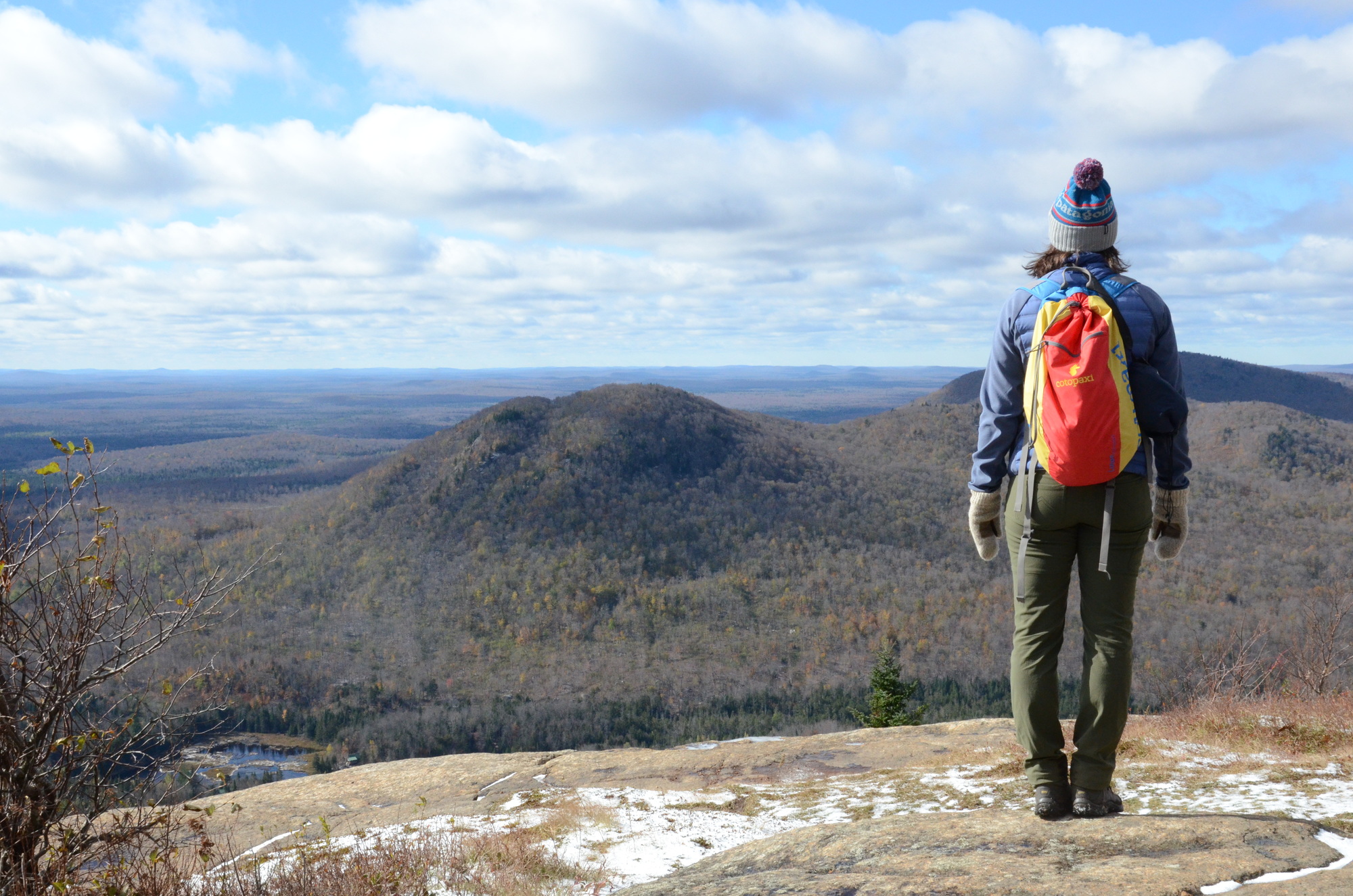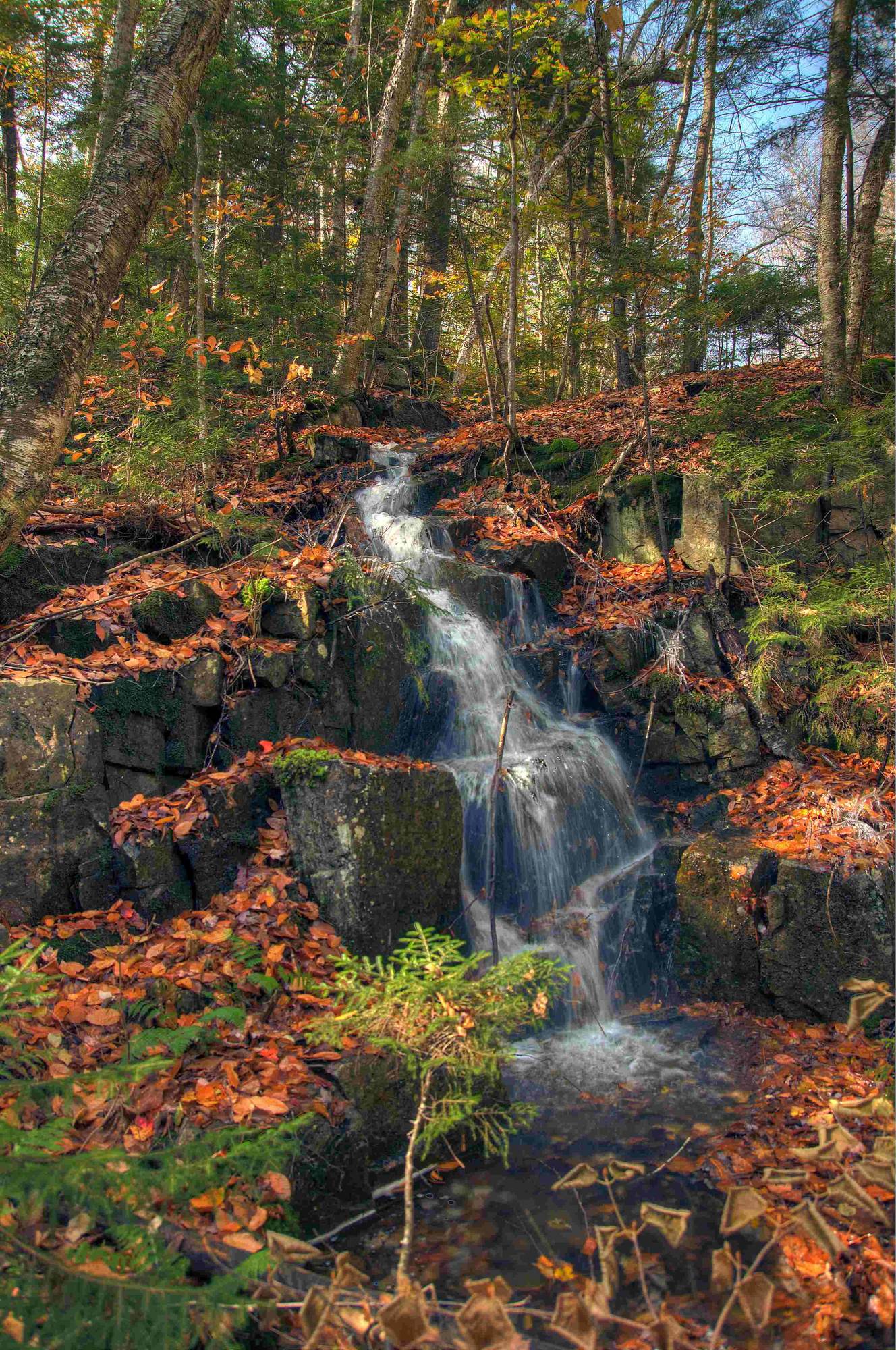|
Have a safe and enjoyable outdoor recreational experience on the lands and waters of the Adirondacks. Properly plan and prepare for your outdoor adventure. Minimize the impact on the mountains and forests, rivers and brooks, ponds and lakes, and the wildlife of the Adirondacks.
Check the Backcountry Information for the Adirondacks web pages for more detailed information on access, outdoor recreation infrastructure, and conditions for those planning to recreate in the Adirondacks. This bulletin provides only the most recent notices.
Emergency Situations: If you get lost or injured; keep calm and stay put. If you have cell service, call the DEC Forest Ranger Emergency Dispatch, 518-891-0235.
More information on hiking safety and what to pack.
Plan
Weather forecasts and conditions can and do change quickly. Check the current National Weather Service Forecast, and be prepared for the forecasted conditions or change your plans.
-
Wintry weather conditions: Late fall into early winter brings vastly changing weather conditions in the mountains. Warmer temperatures and possible rain at trailheads will quickly turn to freezing temperatures, hail, or snow as you gain elevation. Plan for below freezing wind chills and heavier winds on exposed areas and summits. Bring warm, wind protectant layers to help prevent hypothermia.
-
Varying trail conditions:

- Trails are very muddy in lower elevations. Always walk through the mud to avoid damage and erosion to trails and vegetation.
- Fallen wet leaves have made trails very slippery. Use caution on steeper slopes and exposed areas.
- Higher elevations in the High Peaks and exposed summits are experiencing early winter snow and ice. Bring traction devices on all high peaks.
-
Longer hiking time: With varying trail conditions, plan to take extra time to complete hikes, take care and caution on slippery rocks and trails, and bring a head lamp.
Prepare
Properly prepare to better ensure a safe and enjoyable recreation experience.
-
Gear list for late fall/early winter:
-
Head lamp: It can take longer to complete hikes this time of year with the varying trail conditions. A head lamp ensures your safety if you find yourself still on the trail after dark.
-
Traction devices: Higher elevations in the High Peaks may be covered in snow and ice.
-
Waterproof hiking boots: trails are a mix of mud, ice and snow. Protect your feet from the elements with proper hiking boots. This will also help prevent hypothermia.
-
Hat, gloves, wool socks and wind protectant layers: summits and exposed areas will be colder and windy. Protect yourself from hypothermia by wearing and packing the proper layers.
-
Plenty of water: the colder temperatures tend to make people feel less thirsty, but it is important to stay hydrated no matter the weather.
-
Food: You need to consume more calories in cold weather to help prevent hypothermia. See section below on how to keep food and water from freezing.
-
Map of route: trails are covered in leaves, ice or snow making them harder to follow. Knowing your route will help you stay on track. Always be on the lookout for trail markers and junctions so you don’t miss your turn or stray off trail.
-
Emergency essentials kit: Varying weather and trail conditions create a lot more opportunity for injuries or going off course. Carrying an emergency essentials kit will prepare you to handle unexpected situations.
Practice Leave No Trace
 Follow proper trail etiquette to maintain minimal impact on the environment and the natural resources of the Adirondacks, as well as ensure an enjoyable outdoor experience for all visitors by following the Seven Principles of Leave No Trace. Follow proper trail etiquette to maintain minimal impact on the environment and the natural resources of the Adirondacks, as well as ensure an enjoyable outdoor experience for all visitors by following the Seven Principles of Leave No Trace.
Plan and Prepare Ahead: How to keep food and water from freezing during the colder months:
-
Water- Store your water upside down in your pack. Wrap bottles in wool socks, clothing, or use insulated carriers. Bladders will usually not freeze deep in your pack however the tubing will. Blow water back into the bladder after every drink. Use a hydration bladder tube insulator to keep water from freezing.
-
Food- Store small snacks close to your body. Choose food that is less likely to freeze like nuts, granola, etc. and break it into small pieces. You can also wrap your food in newspaper or extra clothing to help insulate it within your pack.
- It is beneficial on very cold hikes to pack extra weight in calories. Bring a thermos of soup, coffee, hot chocolate etc. for a quick warm up. A cookstove, cookware and non-perishable food like soup, oatmeal, or freeze-dried meals will help pack more calories and offer a warm meal on long hikes.
Emergency Essentials:
- A few things to include are: a pocket knife, duct tape to patch ripped jackets or broken poles, a headlamp for unexpected trips out in the dark or overnight stays, space blanket, emergency whistle, first aid kit, fire making tools, extra layers and socks, and extra snacks.
General Conditions/Notices
Learn the conditions you will encounter from Adirondack Backcountry Information.
All
-
Late Fall/Early Winter Weather: Temperatures are near freezing and days are shorter.
- The sun sets earlier and rises later – carry a flashlight or headlamp.
- Dress in layers of non-cotton, wicking fabric, and pack extra clothing.
- Those hiking to the higher summits should also pack a winter hat, gloves and traction devices.
-
Hunting Season: All big game, small game and waterfowl hunting seasons are open and others will open soon. Hikers should be aware that they may meet hunters bearing firearms or archery equipment while hiking on trails. Please recognize that these are fellow outdoor recreationists with the legal right to participate in these activities on forest preserve and conservation easement lands. Hunting accidents involving non-hunters are extremely rare - hikers can wear bright colors if it makes them feel safer.
-
Watch for Moose: Motorists should be aware that moose are rutting this time of year. Moose will be wandering around looking for mates and walking into roads without paying attention to vehicles. Four moose-vehicle collisions occurred during a recent three-day period. Take precautions to avoid colliding with moose.
-
Fire Danger Rating: Low. Check the current fire danger map. DEC forest rangers have responded to several wildland fires started by unattended or improperly extinguished campfires. Be safe with campfires.
Hikers and Campers
-
Trail Conditions:
- Trails may be covered in ice and snow at higher elevations and exposed areas and summits. Bring traction devices on all high elevation hikes.

-
Fallen leaves have made trails slippery. Use caution on steeper slopes.
- Recent heavy rains have resulted in wet and muddy trails – especially in low spots, along water bodies, and in drainages. Avoid damaging hiking trails, trail side vegetation and habitats.
- Wear water-resistant hiking boots and let them get muddy.
- Stay in the center of trails and walk through mud and water.
-
Stream Crossings: Use caution around steep, shallow, rocky streams and rivers. These are considered “flashy”, meaning water levels can rise quickly after heavy rainfall. Water levels will also drop quickly after the rains have stopped.
-
Mountain Summits: Temperatures will be much colder, winds will be stronger, and higher elevations may have wintry weather and ice. Check the National Weather Service Mountain Point Forecasts for selected summits.
-
Bear Canisters: DEC requires overnight users in the Eastern High Peaks Wilderness to use bear-resistant canisters through November 30.
Boaters, Paddlers and Anglers
-
Water Temperatures: Water temperatures are cooling. Paddlers and boaters should wear a personal flotation device (PFD, aka life jacket). People immersed in cold waters can lose the ability to think clearly and move quickly after only a short time in the water. Anglers fishing from shore or wading should also wear a PFD.
-
Water Levels: Due to recent rain water, most streams and rivers are at average or above average levels. See the USGS Current Water Data for New York for stream flow of selected waters.
- Boaters and paddlers should be alert for objects on or below the surface that are typically covered by deeper water.
Mountain Bikers
-
Electric bicycles: Electric bicycles (E-bikes) of any class are not allowed on trails or roadways where public motorized access is prohibited.
*Photo Credit: Mark Belfield - Cold Stream, Piseco Lake, NY
Recent Notices
Notices below reflect recent changes in conditions and recreation infrastructure work that DEC and its partners completed. Check the Backcountry Information for the Adirondacks for ongoing issues and more detailed information.
-
Wilcox Lake Wild Forest: The last segment of the trail to Spruce Mt. Fire Tower in Corinth will be closed from 10/20 until 12/2 for the regular big game season. Access to the tower is prohibited during this time. This part of the trail is on Lyme Timber lands, and is closed each year for this period.
-
High Peaks/Sentinel Range Wildernesses: The trails through the Elk Lake Conservation Easement Tract – to Mt. Marcy via Panther Gorge and to Dix Mountain – will be closed to public use for the duration of the big game hunting season beginning Saturday, October 20. The trails will reopen for public use on December 3.
-
Boreas Ponds/Vanderwhacker Wild Forest: Gulf Brook Road, the main access to the Boreas Ponds Tract, is closed during the week beginning Wednesday, Sept. 12, while DEC completes ditching and repair work on the portion of the road between the Fly Pond Gate and the Four Corners. The road will be open to public motor vehicle access each weekend from 5 p.m. Friday through sundown on Sunday.
- Currently, there are no designated tent sites on these lands - roadside or truck camping is not available at this time.
-
Essex Chain Lakes Complex: Gates have been open on two roads providing hunters and others motor vehicle access to additional lands and roadside primitive tent sites.
- Camp Six Road has three roadside primitive tent sites and a parking lot at the end - one mile from the Chain Lakes North Road.
- The gate at the Outer Gooley Club on the Chain Lakes Road South is open providing access to three primitive tent sites and a parking area 1.5 miles beyond the gate. Two additional tent sites are located past the gate at the seasonal parking area - one further north on the Chain Lakes Road South and one at Pine Lake.
Highlighted Hike- Goodman Mountain, Tupper Lake, NY
This 3.4-mile roundtrip hike in the Horseshoe Wild Forest summits the 2,178-foot Goodman Mountain. The hike is over easy to moderate terrain and offers spectacular views of Coney, Tupper Lake, and Horseshoe Lake Wild Forest.
Trail: From the parking area, locate the old road at the back. This old road used to be Highway 10 between Long Lake and Tupper Lake, back in the day; the old tarmac can still be seen in many areas. Just outside the parking area, there is a kiosk and a new bridge over Cold Brook. A short distance in, you will be to the right of an eskar that you will follow along the road. The road is in decent shape and a neat way to hike to this peak.
The road soon climbs steadily to a height-of-land where the new trail leaves the old road on your left. This is roughly one mile in from the car. Goodman’s summit is only 0.25 miles away but the trail swings around the steep slopes to avoid unnecessary erosion and making the hike much more accessible and achievable for almost anyone. Once on the trail, you will enjoy a wonderful open hardwood forest, where deep greens of the leaves and ferns are the primary backdrop. The trail will swing gently around the base of the mountain and slowly ascend before it makes a sudden turn toward the peak and climb a bit steeper to the shoulder. The trail then follows the ridgeline before it finally ascends to the summit.
Trailhead: From the intersection of Route 3 and Route 30 in the Village of Tupper Lake, locate Route 30 toward Long Lake. Follow here for just under 10 miles to Lumber Jack Spring on the left. Lumberjack Spring is not marked, but a trailhead post is located there, sign soon to follow.

Read How Climate Change Affects New York's Species in DEC's October issue of the Conservationist magazine. Want to read more stories like this, subscribe now!
|



 Follow proper trail etiquette to maintain minimal impact on the environment and the natural resources of the Adirondacks, as well as ensure an enjoyable outdoor experience for all visitors by following the
Follow proper trail etiquette to maintain minimal impact on the environment and the natural resources of the Adirondacks, as well as ensure an enjoyable outdoor experience for all visitors by following the 
